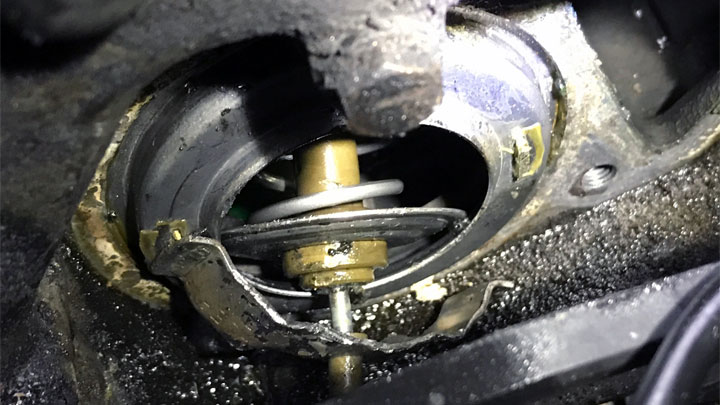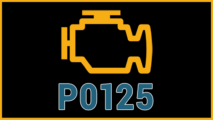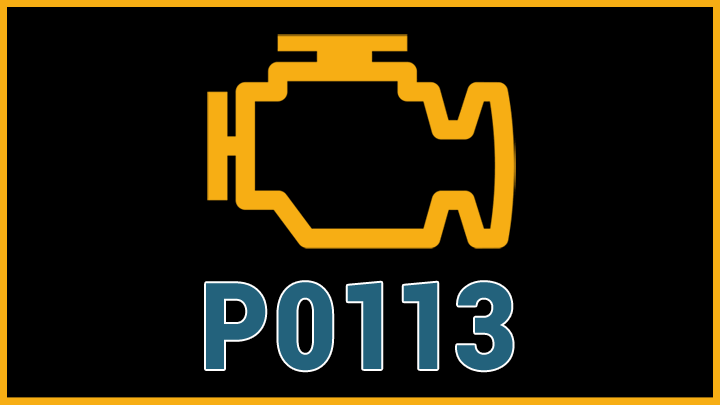Last Updated on February 7, 2022
The P0128 error code suggests that your car’s coolant temperature was at an unusual level after operating your vehicle.
Your engine coolant should reach around 160° F (71° C) within 15 minutes of starting the engine. The powertrain control module (PCM) monitors signals from the coolant thermostat to determine if it reaches this temperature in the right timeframe.
If the PCM doesn’t receive data from the sensor, the coolant takes too long to reach the right temperature, or never does, code P0128 is triggered.
What Does Code P0128 Mean?
After you start your vehicle, coolant stays within the engine block to absorb heat until it reaches the ideal temperature, and the coolant is allowed to circulate.
During this time, the fuel-to-air ratio is higher, giving the engine more fuel to warm up. Once the proper temperature is reached, the PCM hands regulation of the fuel ratio over the oxygen sensors to optimize fuel economy.
Related: Ideal Air-Fuel Ratios in Different Conditions
Since running rich burns more fuel, is rough on your vehicle, and creates more air pollution, the PCM is also programmed to monitor how long it takes the engine to reach the right temperature. Your coolant thermostat is one of the sensors it uses to do this.
As stated, if your vehicle’s engine coolant does not heat up fast enough, or the signal the coolant thermostat returns is either missing or irregular, error code P0128 is the result.
See Also: Code P0118, Code P0125
Symptoms of Code P0128
The only symptom of code P0128 might be the check engine light that led you to use your code reader in the first place. However in some cases, it also results in:
- Irregular or fluctuating engine temperatures when driving the vehicle
- The car may take an unusually long time to heat up, particularly in colder weather
- Better than usual air conditioner performance or poor heater performance
- Excessive fuel consumption
- High idle
Causes of Code P0128
Anything that results in irregular coolant temperatures or interruption of the signal from the coolant thermostat to the PCM can trigger code P0128. The most common causes include:
- Thermostat That’s Stuck Open – The most common cause of code P0128 is a leaky or stuck engine coolant thermostat.
- Faulty Engine Coolant Temperature Sensor – Faulty wiring or a bad sensor can also lead to a P0128 code reading.
- Radiator Fan Malfunction – Your car’s radiator fan helps cool the engine and the coolant. If it sticks in the on position, it will cause the coolant to heat slowly.
- Low or Dirty Coolant – Poor coolant system conditions will affect temperature levels. Most often, this will be an inadequate amount of coolant but sometimes dirty coolant is to blame which can cause the thermostat to stick.
- PCM Failure – Finally, the PCM itself might be malfunctioning and inaccurately throwing error codes.
Is Code P0128 Serious?
Error code P0128 is not serious enough to require immediate repair or prevent you from driving your vehicle. However, as it can greatly impact fuel economy and emissions, the issue should be addressed in a timely manner.
Prolonged coolant temperature problems can also lead to serious engine damage. What caused the code to appear plays a factor in how quickly that damage could occur.
In short, while you don’t need to park the vehicle or head straight to the shop, you do want to diagnose the issue soon.
How to Fix Error Code P0128
The first step in diagnosing error code P0128 is to check if the engine coolant thermostat is stuck open or leaking as that is the most common cause of the code.
Make sure the vehicle is completely cool and then start it and place your hand on the radiator hose. Be careful as, if things are working as they should, the hose will get very hot. If it warms slowly or not at all, the thermostat is likely sticking or leaking and will need to be cleaned or replaced.
If that’s the case, you’ll also want to check your coolant levels and coolant system condition. Dirty coolant can cause a thermostat to stick.
If the hose is getting hot quickly, your next step is still to check your coolant levels and system. You also want to listen to see if the radiator fan is stuck on or see if part of a hose collapsed.
If the coolant system looks good and the fan is not stuck on, you’ll want to check if the coolant temperature sensor is faulty. Compare the reading your scan tool is giving with a manual reading using an infrared thermometer. Normal temperatures are around 200° F (93° C).
If the readings don’t match, check the wiring and connectors to the sensor and replace or clean them if necessary. Clear the code and start the vehicle. If the code reappears, the sensor may need to be replaced.
If you replace the sensor, and the issue persists, you could need to replace your PCM, but keep in mind that this is a rare cause of code P0128.




